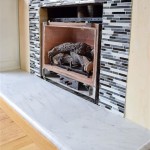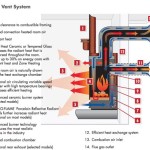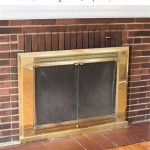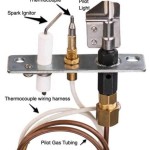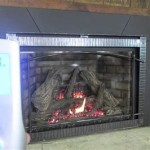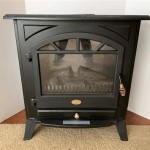Mounting a TV Above a Fireplace: Considerations and Best Practices
Mounting a television above a fireplace is a popular design choice, offering space-saving benefits and potentially creating a visually appealing focal point in a living room. However, this configuration presents several unique challenges that must be carefully considered to ensure both the longevity of the television and the safety of the installation. Factors such as heat exposure, viewing angles, cable management, and structural support play critical roles in determining the suitability of this setup.
Before proceeding with a TV wall mount above a fireplace, a thorough assessment of the fireplace's usage, the room's layout, and the television's specifications is essential. Neglecting these preliminary steps can lead to suboptimal viewing experiences, potential damage to the television due to excessive heat, or even structural failures resulting in damage to property or injury.
Heat Management and Television Longevity
One of the primary concerns when mounting a television above a fireplace is the potential for heat damage. Fireplaces, particularly those fueled by wood or gas, generate significant amounts of heat that can rise and accumulate in the space directly above them. Televisions are electronic devices susceptible to damage from excessive heat. Prolonged exposure to high temperatures can degrade internal components, shorten the lifespan of the TV, and potentially void the manufacturer's warranty.
To mitigate the risk of heat damage, several strategies can be employed. The type of fireplace is a crucial factor. Electric fireplaces generally produce less heat and are, therefore, a safer option compared to wood-burning or gas fireplaces. If a wood-burning or gas fireplace is present, considering alternative mounting locations for the television altogether is advisable. If mounting above the fireplace is the only option, frequent monitoring of the heat levels above the mantel is crucial, especially during periods of fireplace usage. A thermometer placed in the intended television location can help gauge the ambient temperature.
Installing a substantial mantel can also help deflect heat away from the television. A wider and deeper mantel acts as a barrier, preventing heat from directly rising and accumulating above. The material of the mantel also plays a role; non-combustible materials like stone or concrete are preferable to wood, as they offer greater heat resistance. In some cases, a specialized heat deflector can be installed to further protect the television. These deflectors are typically made of metal and designed to redirect heat away from the wall above the fireplace.
Furthermore, selecting a television with a higher operating temperature range can provide some added protection. Consult the TV's specifications to determine its recommended operating temperature. While this doesn't eliminate the risk of heat damage entirely, it offers a greater margin of safety. Proper ventilation around the television is also vital. Ensure there is adequate space around the back and sides of the TV to allow for airflow, preventing heat from becoming trapped. Avoid enclosing the TV in a tightly fitted cabinet or recess above the fireplace.
Regularly monitoring the television for signs of heat damage is crucial. This includes checking for discoloration of the screen, distorted images, or unusual noises. If any of these symptoms are observed, immediately discontinue using the fireplace and consult a qualified technician.
Optimal Viewing Angles and Ergonomics
Beyond the technical considerations of heat and structural integrity, the ergonomics of viewing a television mounted above a fireplace must be addressed. The height of the television can significantly impact viewing comfort and potentially lead to neck strain or discomfort. Ideally, the center of the television screen should be at eye level when seated in the primary viewing location. Mounting the television too high necessitates tilting the head upwards for extended periods, which can cause muscle fatigue and discomfort.
To determine the optimal mounting height, measure the eye level of viewers when seated. Then, calculate the distance between the floor and the desired center point of the television screen. Consider the size of the television; larger screens may require a slightly higher mounting position. However, prioritize keeping the screen as close to eye level as possible.
Tilt-adjustable TV mounts are highly recommended for installations above fireplaces. These mounts allow for adjusting the vertical angle of the television, compensating for the elevated mounting position. By tilting the screen downwards, the viewing angle can be optimized, reducing neck strain. Select a tilt mount with a sufficient range of adjustment to accommodate the specific mounting height and viewing distance.
In rooms with multiple viewing locations or varying seating heights, a full-motion TV mount may be beneficial. These mounts allow for adjusting the television's position in multiple directions, including tilting, swiveling, and extending the screen away from the wall. This flexibility allows for customizing the viewing angle to suit different viewers and viewing situations. While full-motion mounts offer greater versatility, they are typically more expensive and require more robust wall anchoring.
Consider the viewing distance when determining the appropriate TV size. A larger screen is necessary for greater viewing distances. However, mounting a screen that is too large for the viewing distance can result in eye strain and a less immersive viewing experience. Online calculators and guidelines can assist in determining the appropriate TV size based on the viewing distance.
Lighting conditions in the room can also affect viewing comfort. Glare from windows or light fixtures can make it difficult to see the screen. Consider installing window coverings or adjusting light fixtures to minimize glare. Anti-glare screens or screen protectors can also help reduce reflections.
Structural Support, Cable Management, and Installation
Ensuring adequate structural support for the television mount is paramount for safety and preventing damage to the wall. The weight of the television, combined with the mount itself, can exert significant stress on the wall. It is imperative to mount the television to wall studs, which are vertical framing members that provide the strongest support. Using a stud finder to locate the studs accurately is essential. Avoid mounting the television solely to drywall, as it lacks the necessary strength to support the weight.
If the stud locations do not align with the desired mounting position, a bridging technique can be employed. This involves attaching a horizontal piece of wood, known as a ledger board, to the studs. The television mount is then attached to the ledger board, distributing the weight across multiple studs. Ensure the ledger board is of sufficient thickness and length to adequately support the television. Alternatively, specialized TV mounts with adjustable mounting arms can be used to accommodate off-center stud locations.
Cable management is another crucial aspect of mounting a television above a fireplace. Concealing cables not only improves the aesthetics of the installation but also prevents tripping hazards and protects the cables from damage. Several options are available for cable management, including in-wall cable routing, cable raceways, and cable sleeves.
In-wall cable routing involves running the cables through the wall cavity, concealing them from view. This requires creating access holes in the wall and carefully routing the cables through the studs. This method provides the cleanest look but requires more extensive work. Cable raceways are surface-mounted channels that conceal the cables. They are easier to install than in-wall routing but are visible on the wall. Cable sleeves are flexible tubes that bundle the cables together, providing a more organized and less cluttered appearance.
Regardless of the cable management method chosen, ensure sufficient slack in the cables to allow for movement of the television if using a tilt or full-motion mount. Avoid kinking or bending the cables excessively, as this can damage the wires. Use cable ties or Velcro straps to secure the cables and prevent them from dangling.
Installing a television above a fireplace can be a complex project, particularly if it involves in-wall cable routing or structural modifications. If uncomfortable performing the installation yourself, consider hiring a professional installer. A qualified installer will have the necessary tools, expertise, and experience to ensure the television is mounted safely and securely, and that all cables are properly managed. They can also provide guidance on selecting the appropriate mount and cable management solutions for the specific installation.
Prior to commencing any work, consult local building codes and regulations. Certain jurisdictions may have specific requirements for electrical wiring, cable routing, and structural modifications. Obtain any necessary permits before starting the project to avoid potential fines or delays.

Can I Mount My Tv Above The Fireplace

Can You Put A Tv Over Fireplace Direct Fireplaces

Can I Mount My Tv Above The Fireplace

Luxury Tv Fireplace Wall Best Of For Mounting Over Mou Above Entertainment Center Diy Mount

Safely Mount A Tv Above An Electric Fireplace Touchstone Home S Inc

Tmo100a Mount Tv Above Fireplace Mountable 55 Inches To 65 Tranquil

Is It Safe To Mount Your Tv Above The Fireplace Chimney And Wildlife

Should You Mount Your Tv Above A Fireplace Digital Trends Over Design Ideas

Mounting Tv Over A Fireplace Mount It

Tv Wall Mount Installation With Wire Concealment Over Fireplace
Related Posts



